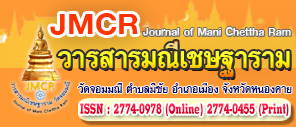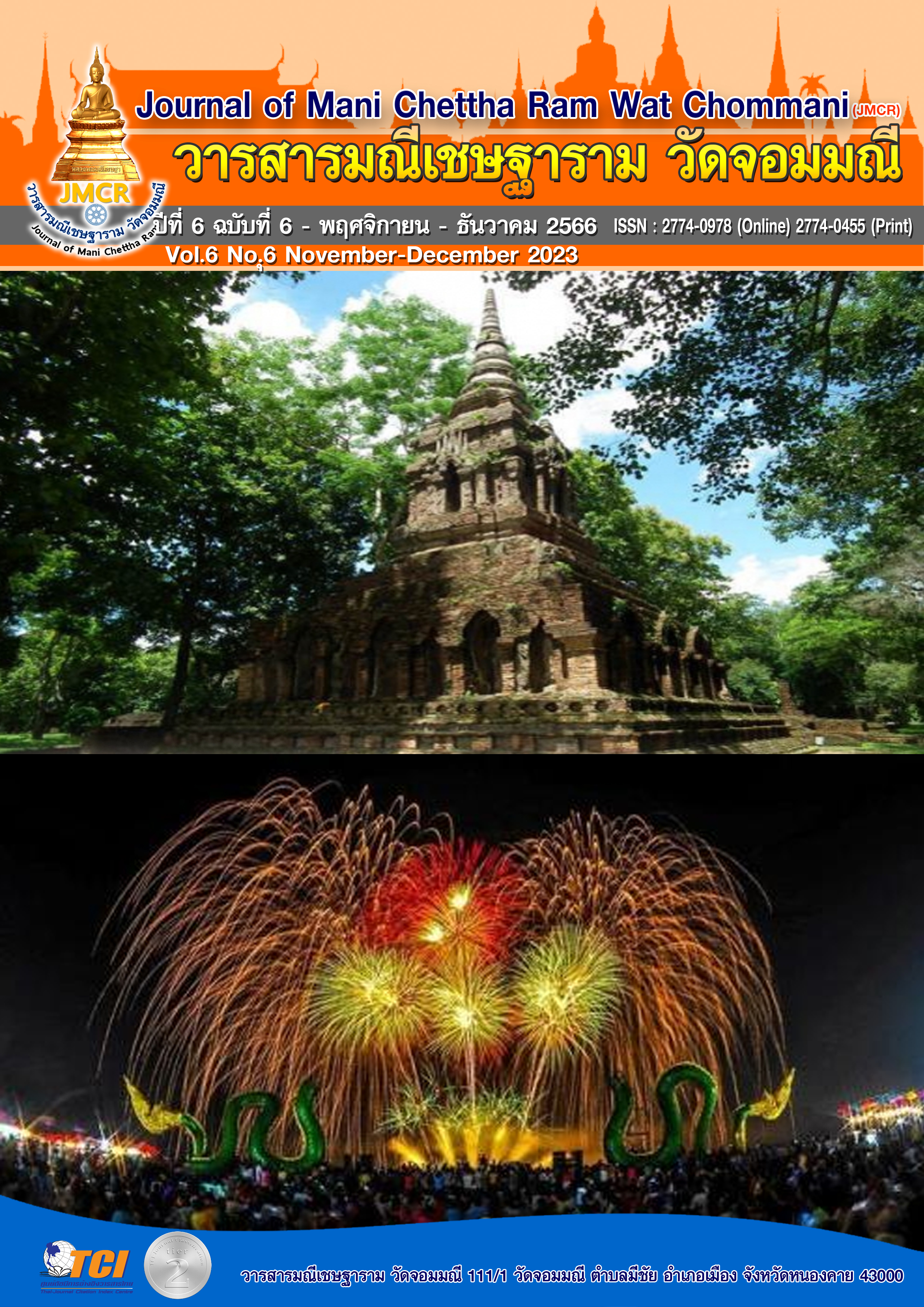THE MUSICAL SOLO - COMPOSITION OF SUT SA-NGUAN SONG CHAN
Keywords:
Song composition, alternative solo composition, Sut Sa-Nguan Song ChanAbstract
The research on the musical solo-composition of Sut Sa-Nguan Song Chan aimed to study Sut Sa-Nguan Song Chan and the musical solo-composition of Khong Wong Yai (the large circle of gongs). Data were collected from documents and critiques from Thai music composition experts and then analyzed to summarize the final findings.
The findings revealed that: 1. Sut Sa-Nguan Song Chan is a Mon accent song with the single rhythmic patterns of Propkai in 6 rhythms that was composed by Khru Kloi Na Bang Chang. The origin of this song was influenced by changing from Sut Sa-Nguan Sam Chan to Sut Sa-Nguan Song Chan. Later, Mr. Montree Tramote changed the melody of Sut Sa-Nguan Sam Chan into Sut Sa-Nguan Nueng Chan for being a traditional Thai song (Pleng Thao). In addition, Sut Sa-Nguan Song Chan is often played on various occasions, including for performance, alternative composition, and using the melody in international Thai songs and being a song for Thai musical instrument solo competitions at the local, regional, and national levels. 2. The musical solo-composition of Khong Wong Yai (the large circle of gongs) was composed by focusing on the heterophonic texture of Sut Sa-Nguan Song Chan and inserting special techniques in playing Khong Wong Yai (the large circle of gongs), which consists of: beating by flicking up, beating by flicking down, beating by flicking to stop the sound, Beating to the rhythmic sound, slick beating, upward beating, downward beating, a Krod beating, beating by up-and-down crossing, Kratob-Ku 3, Kratob-Ku 4, 5, 8 and 10.
References
เฉลิมศักดิ์ พิกุลศรี. (2542). สังคีตนิยมว่าด้วยดนตรีไทย. (พิมพ์ครั้งที่ 2). กรุงเทพมหานคร: โอเดียนสโตร์.
ชำนาญ สวยค้าข้าว และคณะ. (2562). ความสำคัญและอัตลักษณ์ทางเดี่ยวระนาดทุ้ม เพลงทยอยเดี่ยวทางครูพินิจ ฉายสุวรรณ (ศิลปินแห่งชาติ). วารสารวิชาการบัณฑิตวิทยาลัยสวนดุสิต, 15(1), 193 – 208.
ธีรพงศ์ ทองเพิ่ม และสิริชัยชาญ ฟักจำรูญ. (2558). การวิเคราะห์ทางเดี่ยวระนาดเอก เพลงพญาโศกของครูสุพจน์ โตสง่า. วารสารมนุษยศาสตร์วิชาการ, 22(1), 207 – 230.
ประชากร ศรีสาคร. (2566). แนวคิดการประพันธ์เดี่ยวซออู้ เพลงกล่อมนารี สามชั้น. วารสารศิลปกรรมศาสตร์ มหาวิทยาลัยขอนแก่น, 15(1), 71-90.
ปราโมทย์ ด่านประดิษฐ์. (2563). การออกแบบวิธีวิจัยเพื่อประดิษฐ์และถ่ายทอดทางเดี่ยว. วารสารวไลยอลงกรณ์ปริทัศน์, 10(1), 109 – 121.
พิทักษ์ จรรย์นาฏย์. (2566). แบบวิพากษ์ทางเดี่ยวฆ้องวงใหญ่เพลงสุดสงวน สองชั้น. มนตรี ตราโมท. (2538). ดุริยสาสน์ของนายมนตรี ตราโมท. อนุสรณ์งานพระราชทานเพลิงศพนายมนตรี ตราโมท. ม.ป.ท. : ม.ป.พ.
ราชบัณฑิตยสถาน. (2545). สารานุกรมศัทพ์ดนตรีไทย ภาคคีตะ – ดุริยางค์. (พิมพ์ครั้งที่ 2). นนทบุรี: สหมิตรพริ้นติ้ง.
สุรพล สุวรรณ. (2551). ดนตรีไทยในวัฒนธรรมไทย. (พิมพ์ครั้งที่ 2). กรุงเทพมหานคร: สำนักพิมพ์แห่งจุฬาลงกรณ์มหาวิทยาลัย.




